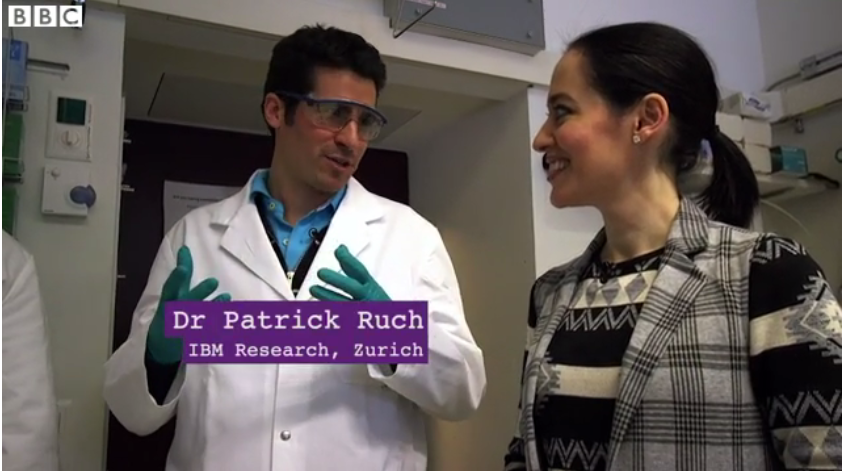Redox flow power delivery and cooling
Energy supply and cooling is a paramount challenge in information technology. Today, air-cooled microprocessors use more packaging pins for power delivery than for communication, and their cooler volume is about a million times greater than that of their active elements.
Shifting the paradigm
Our research into redox flow electrochemistry for power delivery and cooling proposes a paradigm shift in the way we power and cool computer components: Liquid redox electrolytes transported through microfluidic chips provide both power and cooling via the same fluidic pathways. Based on this concept, the integration density and energy efficiency of computers can be enhanced substantially.
Successful integration of miniaturized redox flow cells with microprocessors requires advances in the fields of redox electrochemistry, heat and mass transport in forced convective flows as well as cell design and packaging. The present research efforts are centered around the fundamental development of these technologies and their demonstration in a chip-scale redox flow battery.
Silicon-integrated redox flow cell for combined power delivery and cooling
Microfluidic test chip with redox electrolytes
Redox flow test rig for charging of electrolyte solutions and combined electrochemical and thermal characterization of microfluidic chips
Redox flow battery
Ask the expert
SNSF project
This work was supported in part by the Swiss National Science Foundation
Publications
[1] A. Andreev, A. Sridhar, M.M. Sabry, M. Zapater, P. Ruch, B. Michel, D. Atienza,
“PowerCool: Simulation of cooling and powering of 3D MPSoCs with integrated flow cell arrays,”
IEEE Transactions on Computers, Early Access (2017).
[2] J. Marschewski, P. Ruch, N. Ebejer, O. Huerta Kanan, G. Lhermitte, Q. Cabrol, B. Michel, D. Poulikakos,
“On the mass transfer performance enhancement of membraneless redox flow cells with mixing promoters,”
International Journal of Heat and Mass Transfer 106, 884-894 (2017).
[3] K.M. Lisboa, J. Marschewski, N. Ebejer, P. Ruch, R.M. Cotta, B. Michel, D. Poulikakos,
“Mass transport enhancement in redox flow batteries with corrugated fluidic networks,”
Journal of Power Sources 359, 322-331 (2017).
[4] J. Marschewski, L. Brenner, N. Ebejer, P. Ruch, B. Michel, D. Poulikakos,
“3D-printed fluidic networks for high-power-density heat-managing miniaturized redox flow batteries,”
Energy Environ. Sci. 10, 780-787 (2017).
[5] J. Marschewski, R. Brechbuehler, S. Jung, P. Ruch, B. Michel, D. Poulikakos,
“Significant heat transfer enhancement in microchannels with herringbone-inspired microstructures,”
International Journal of Heat and Mass Transfer 95, 755-764 (2016).
[6] J. Marschewski, S. Jung, P. Ruch, N. Prasad, S. Mazzotti, B. Michel, D. Poulikakos,
“Mixing with herringbone-inspired microstructures: overcoming the diffusion limit in co-laminar microfluidic devices,”
Lab On A Chip 15, 1923-1933 (2015).
[7] A. Sridhar, M.M. Sabry, P. Ruch, D. Atienza, B. Michel,
“PowerCool: Simulation of integrated microfluidic power generation in bright silicon MPSoCs,”
In Proc. IEEE/ACM International Conference on Computer-Aided Design (ICCAD), 527-534 (2014).
[8] M.M. Sabry, A. Sridhar, D. Atienza, P. Ruch, B. Michel,
“Integrated microfluidic power generation and cooling for bright silicon MPSoCs,”
In Proc.
Design, Automation and Test in Europe (DATE) Conference and Exhibition (2014).
[9] P. Ruch, T. Brunschwiler, W. Escher, S. Paredes, B. Michel,
“Toward five-dimensional scaling: How density improves efficiency in future computers,”
IBM J. Res. Develop. 55(5), 15:1-13 (2011).

